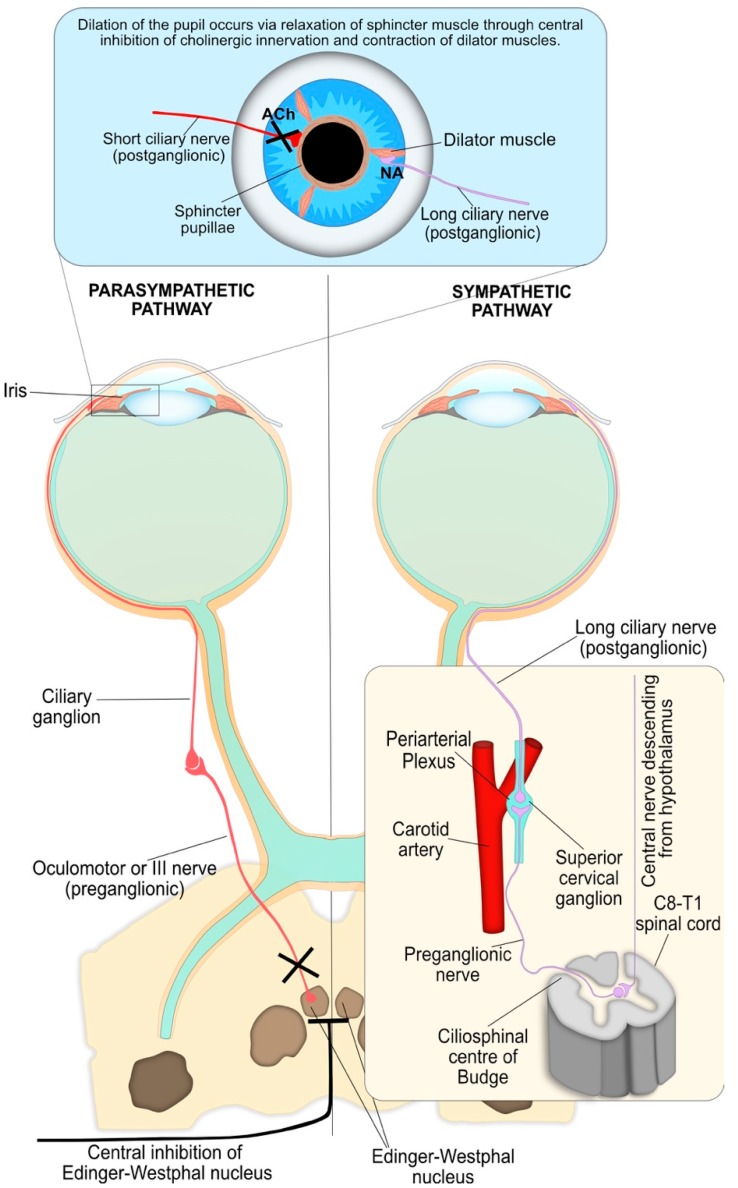Figure 4.
Both parasympathetic and sympathetic nervous systems are required for pupil dilation as part of the PLR. The parasympathetic innervation of the pupil sphincter is inhibited by central supranuclear inhibition of Edinger–Westphal nuclei via α2-adrenergic receptor activation, resulting in relaxation of the pupil sphincter muscle. The sympathetic influence on the iris dilator muscle consists of a paired three-neuron arc on both the right and left sides of the central and peripheral nervous system without decussations. The first-order (central) neuron originates in the hypothalamus and descends to synapse with the pre-ganglionic in the ciliospinal centre of Budge at C8-T1 of the spinal cord. The pre-ganglionic neuron ascends from the ciliospinal centre of Budge to synapse with the post-ganglionic neuron at the superior cervical ganglion, which is located at the periarterial plexus near the carotid artery bifurcation. Finally, long ciliary (post-ganglionic) nerves travel to and innervate the contraction of the iris dilator muscles, via a release of noradrenaline (NA) at the neuromuscular junction, resulting in pupil dilation. The synaptic transmission at the other junctions is mediated by acetylcholine.

